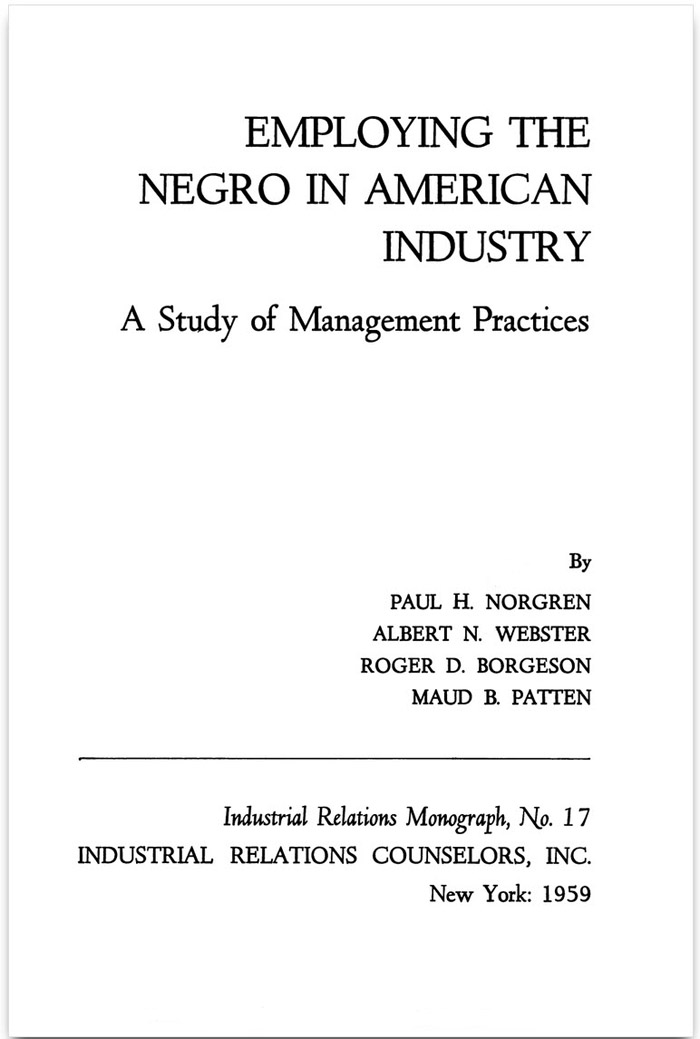Sometime around 1955, the IRC staff developed a proposal for the Ford Foundation and the National Urban League, asking for company contributions from several companies (DuPont, IBM, Standard Oil Company of California, Standard Oil Company of New Jersey, and Westinghouse Electric Corp.) to study the employment of African Americans in industry. This report had the working title “The Negro Study.” The study focused on Black employees in a broad sample of major companies and how they were affected by local/national economics, by company policies, and by unions that represented them as members in segregated, as well as integrated, work units. Reviewing the draft report was one of my first tasks at IRC.
Maud Patten, IRC’s chief editor, was trying to bring this project to a conclusion. She asked me to read the draft. I agreed it was appalling. I was uncertain about raising my concerns with her but finally decided to do so, and she sighed with relief, for my conclusions coincided with hers.
Maud was at the time over 65 years old and had delayed retirement to finish editing “The Negro Study.” She was originally from Jamaica and was a phenomenal editor and grammarian. She reported to the president, but she didn’t feel she had the clout to tell him of her impressions. I suggested that we tell him jointly.
The president was never a big fan of research because he had trouble in seeing how research could financially support any organization. He could only see research as a cost. He was apoplectic over the news of the problems with the research report being in such a mess, for he understood how important it was in the minds of the companies and organizations that funded it. In the end, he saw the importance of getting it right, and he assigned me to help Maud rewrite it.
I am neither a writer nor a grammarian—those were Maud’s talents—but I understood research and research reports. I also understood by this time the importance of getting a completed report out to its sponsors and also whatever IRC’s future in research might be. I ended up writing more of that report than anyone had planned for me, but my name was never shown as an author. In 1959, we published the report, “Employing the Negro in American Industry.” The study was one of the earlier research papers on the subject of equal employment opportunities. And it even had a preface written by then Vice President Richard M. Nixon.
In retrospect, my own view of this study and the ensuing book is that they were both good but certainly not “barn burners.” I felt that at some point there might be ways to capitalize on the research
ideas for the overall benefit of IRC, although it was several years before I had the chance to make good on this plan. I believed that companies should pay more attention to the employment of African Americans in the corporate world and to recognize the talents they had. It wasn’t until 1960 that we proposed that either IRC or IRCS (IRC Services, our consulting business subsidiary, which would later be called ORC) should set up a peer network for HR/IR people to discuss the successes and failures of recruiting and managing this minority group, but we insisted that we would try to emphasize the successes. We reasoned that company staff would benefit more if they began to understand their role in how to bring Black employees into all aspects of their business operations, especially where their talents would fit and/or could be developed and become a positive force in organizations.
(Image courtesy of HaitiTrust)

